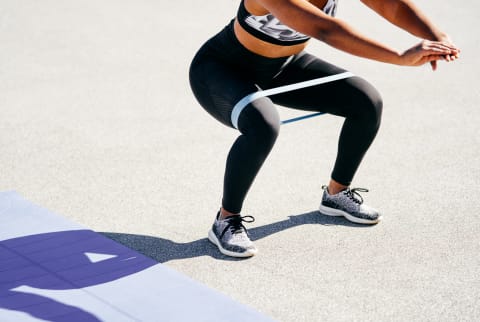Advertisement
Squats vs. Walking: Science Reveals The Unexpected Winner For Blood Sugar


We've all heard that sitting is the new smoking. But how much activity does it really take to undo the health risks of prolonged sitting? A new study might just have the answer: as little as 10 bodyweight squats every 45 minutes.
Surprisingly, this strategy outperformed a single 30-minute walk when it came to controlling blood sugar, thanks to a powerful metabolic player—lactate.
The science behind the squat
Lactate, often thought of as a mere byproduct of exercise, is a metabolic superhero. It signals muscle cells to bring more GLUT4 transporters1 to their surface, which helps pull glucose from the bloodstream into muscle cells. This glucose-clearing effect can last for up to 48 hours after those quick bursts of activity, according to the study.
Researchers tested four different conditions:
- Uninterrupted sitting for 8.5 hours (SIT)
- One 30-minute walk (ONE)
- 3-minute walks every 45 minutes (WALK)
- 10 squats every 45 minutes (SQUAT)
Both the WALK and SQUAT strategies led to a 21% reduction in blood sugar spikes compared to uninterrupted sitting. That's nearly double the glucose-lowering benefit of a single 30-minute walk.
Why squats win
The key seems to lie in muscle activation patterns. Frequent squatting stimulated intense muscle engagement, particularly in the quadriceps and glutes. This heightened activity boosted blood glucose clearance more effectively than walking or sitting with infrequent breaks.
The intensity of muscle activation was a game-changer. Researchers found that the greater the activation, the more dramatic the glucose-lowering effect.
Interestingly, while both squats and short walks outperformed the single walking session, neither exercise significantly activated the hamstrings—highlighting a potential area for future research on optimizing glycemic control through various muscle groups.
Why it matters
For those with metabolic conditions like diabetes or anyone just simply looking to improve their glucose levels, these findings are promising. The study suggests that it's not just about moving more but moving smarter.
Rather than relying solely on long walks or extended gym sessions, brief, intense breaks sprinkled throughout the day can yield significant health benefits.
The takeaway
This research offers a practical takeaway:
- Set a timer to take movement breaks every 45 minutes.
- Perform 10 bodyweight squats, focusing on proper form to engage the glutes and quads.
- Reap the benefits of better blood sugar regulation without leaving your office or needing fancy equipment.
In a world where many spend over eight hours sitting each day, this approach provides a realistic, science-backed way to combat the metabolic consequences of prolonged sitting.